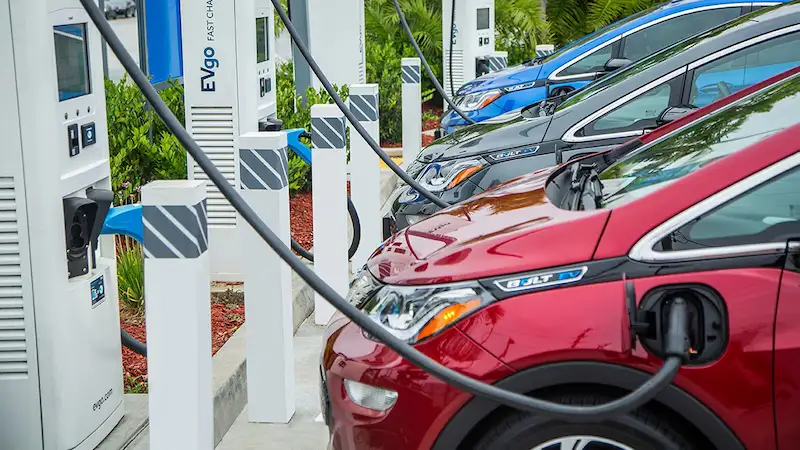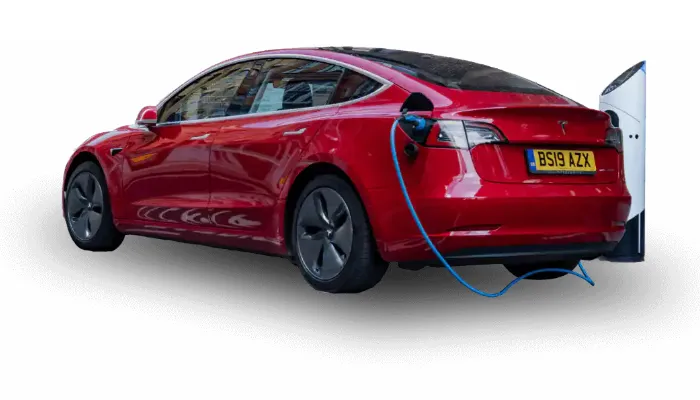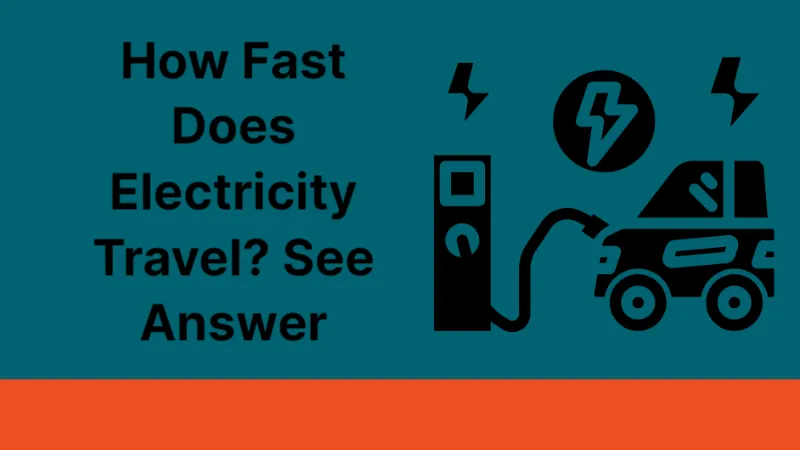Electrons move through a conductor while being surrounded by an electrical field to produce electricity. To give you a straightforward illustration, consider a copper conductor that is a part of an electrical cord that connects a table lamp to a power source. So, How Fast Does Electricity Travel?
This energy travels at roughly the speed of light in the form of electromagnetic waves. The speed of light is 670.616,629 miles per hour, or 300 million meters per second. Electrons, however, move a little more slowly within electromagnetic waves. Drift velocity is what it is.
What is the Speed of Electricity?
The flow of electrons through a conductor in a specific electrical field is referred to as electricity. The conductor used in the majority of home appliances is a copper wire.
Currently, there are two possible meanings for the term “electricity speed.” The conductor’s conductivity is the first factor to consider. Electricity moves almost as quickly as light itself in this situation, which is the explanation. It moves at a speed of 670,616,629 miles per hour, to give you some numbers.
Another possibility is that we’re discussing the velocity of electrons in a specific electrical field. Although you might assume that this speed must be equivalent to the speed of electricity, this is not the case. In actuality, electrons move a little more slowly; this idea is known as drift velocity.

How Many Miles Does Electricity Travel Per Second?
You can see that a wire doesn’t move at all quickly when you look at one and try to imagine the speed at which it moves. This is due to the fact that it moves at a speed that is only about 1/100th that of light, while the electrons inside it move much more slowly. Therefore, you must be aware of the speed of light in order to comprehend how electricity moves. Fortunately, there is a simple method for determining how quickly electricity moves.
Electric current speed can be thought of as the average velocity of an electron between collisions if we imagine an electron as a tiny ball bouncing through a grid of metal wires. Approximately 3 * 108 meters per second, the speed of light, is reached at this rate. However, the average speed of all electrons flowing through the wire is 2.5 x 10-4 m/s, or roughly one-fourth of a meter per second.
What is the Speed of Electricity in Miles Per Hour
When it is close to another object, electricity moves at the speed of light. For actual electrons, this is not the case. As opposed to this, they move at a speed that is almost as fast as light, called the speed of information, while electrons move much more slowly than this. This question’s response is 3 * 108 meters per second. Let’s get into more detail about this. For example, you can anticipate a light bulb to turn on in a few seconds.
The number of millions of meters per second is used to describe an electron’s speed. Calculating an electron’s speed is challenging because electrons move in random directions. The average speed of electrons in an electrical circuit is called the “drift velocity” and is considered to be the speed of electricity. It’s crucial to remember that this number is enormous. When an electron is in an electric current, it generally moves at a speed of 2.5 x 10-4 m/s.
How Many Feet Per Second Does Electricity Travel?
What is the speed of electricity in feet per second? When figuring out how much electricity you use, this is a crucial question to consider. Electricity doesn’t move in straight lines like water, which moves at a much slower rate. It moves in waves and has a frequency. Electricity moving through a wire moves at 1/100th the speed of light, which travels at 186,000 miles per second. Electricity is made up of a stream of slightly heavier electrons than the massless material that is light. Therefore, the constant collision of electrons with atoms in the wire slows the flow of electricity.
It’s difficult to determine how fast electricity moves. Calculating the drift velocity—the average speed at which electrons in a conductor move through an electric field—is one method of providing the answer. About 2.5 x 10-4 m/s, or one-fourth of a millimeter per second, is the drift velocity of an electron in a copper wire. As a result, rather than being dependent on the speed of the electrons themselves, the speed of electricity is a function of how much energy is present in the system.
Is Electricity as Fast as the Speed of Light?
Although electrical currents move at the speed of light, why are they so quick? The speed of electromagnetic waves is equal to that of light. The two are unrelated, despite long-held scientific speculation that electrical currents might move much more quickly than light. Radio waves move at about 300,000 kilometers per hour, according to Heinrich Rudolf Hertz’s measurement of their speed in 1888. His findings supported the theory of James Clerk Maxwell.
The propagation of electrical charge through a conductive medium is what is meant when electromagnetic waves are mentioned. The characteristics of the medium affect how fast these waves travel. For instance, while moving at the same speed in a conductor, electrons in a vacuum move at a speed of 300 million meters per second. This comes very close to being the speed of light. But it’s crucial to remember that this speed is relative to light. Therefore, you can ask a professor or physicist the question of how quickly electrons move through a wire.
Drift Velocity
The speed and movement of electrons can vary between different materials. Some of them restrict the movement of electrons outside of their atoms by keeping them more tightly bound. While some materials are known as electrical conductors, others enable the electrons to bounce around more quickly. A single one of them is copper.
The electrons’ chaotic energy causes them to move more slowly inside a conductor. An electrical force is added to make it faster and more focused. The speed of the electricity leaving the conductor increases significantly as a result of this force’s concentration of all the energy in one direction.

Calculating the Speed of Electrons Within Electricity
Every electron carries a negative charge. In some cases, an atom’s electrons are fixed. The conductor grid, made of safe atoms, allows others to move around without restriction. An electrical charge is produced when these free electrons move and bounce.
How conductive a substance is will depend on how many electrons can move through it. Some materials are more conductive than others, such as copper.
Negatively charged electrons move in the opposite direction of positively charged ones. Free electrons begin to somewhat randomly bounce in various directions as a result. Although it is useless without some form of direction, this energetic bouncing helps to create an electric charge. This is where the electromagnetic force, or EMF, enters the picture.
Read about What Happens to the Old Batteries in Electric Cars?
Understanding Electrical Currents
Electrical currents are comparable to water flowing through a pipe in a system. The flow will be stronger if the pressure is higher at one end. When a wire is connected to a battery or a power outlet, it is similar to applying pressure to one end of a pipe, except that copper wire is being subjected to an electrical field rather than water.
As previously mentioned, while the transmission of the electric current is roughly at the speed of light, the electrons within the electromagnetic wave may only be able to move at a few millimeters per second. This is due to the electrons’ busy activity of creating energy while bouncing around the conductor; however, they aren’t always moving in tandem with this energy.
A Few Parting Words
The question of how quickly electricity travels has a straightforward solution, as you have just read. It doesn’t require an energy source and moves at a speed that is comparable to that of light. Your solar panels will therefore produce electricity that is just as quick and powerful as the one you would receive from your utility provider.





